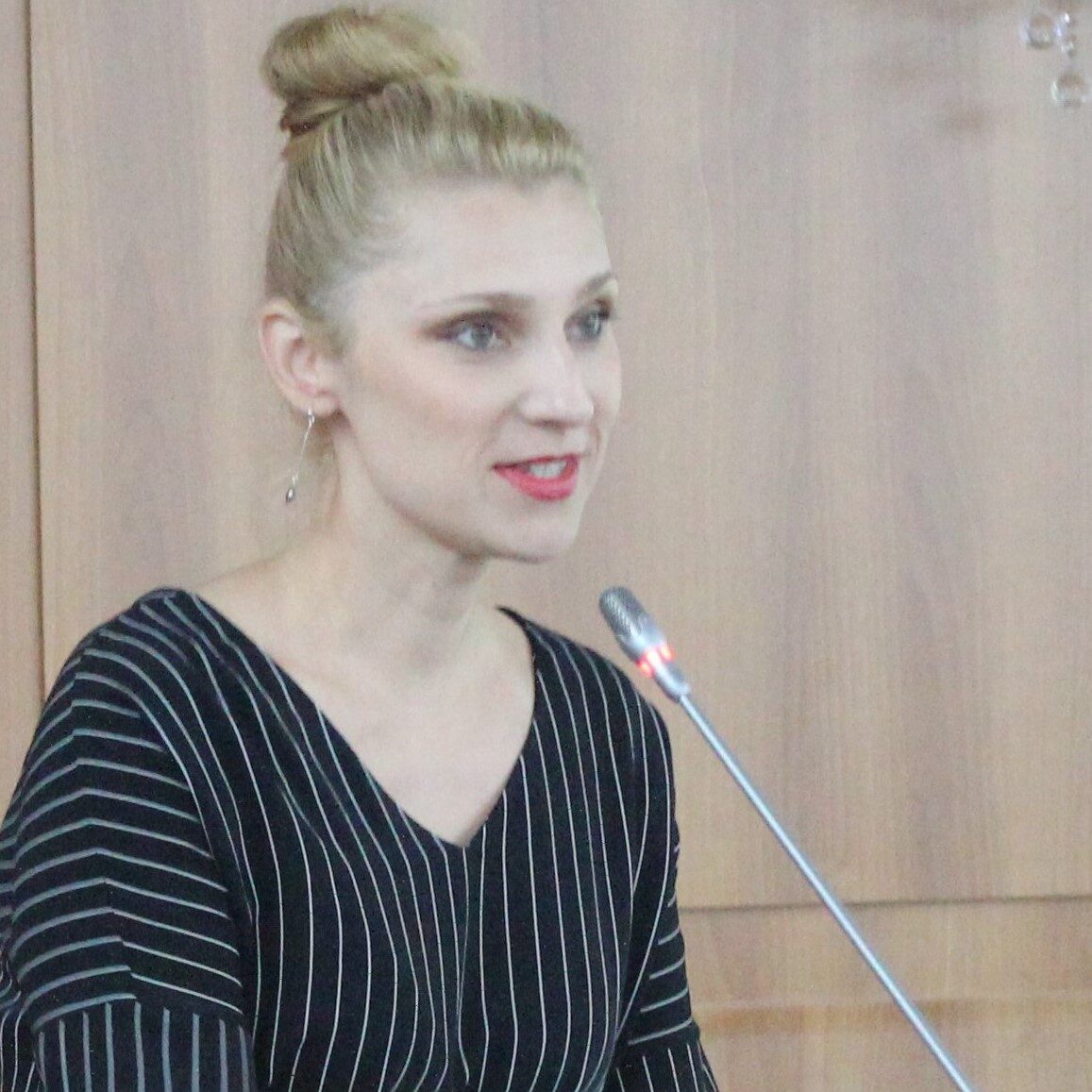ABSTRACT
The article discusses the constituents necessary for RACHP to “really” reach net zero. It starts with Nationally Determined Contributions (NDCs) and the call for net zero emissions to keep the global temperature well below 1.5 °C, followed by current climate developments. Estimates are provided for emissions from refrigerants and electricity generation during 2020-2050 for both developed and developing countries, with the latter expected to show a large growth during that period. For developing countries’ refrigerant emissions, equipment measures and more stringent GWP reductions than following Kigali appear essential for net zero, even when Kigali lacks an emissions control mechanism. Current findings are briefly compared with data in the Global Cooling Pledge (adopted at COP28 in Dubai). Globally, a “real” 2050 net zero for RACHP emissions could only be achieved given various developments, particularly concerning a major increase in low electricity-related emissions in developing countries. Undoubtedly, a forecast of the RACHP future -35 years from now- is virtually impossible; nevertheless, several conclusions are presented about what will and will not be possible!
Keywords: electricity emissions, energy efficiency, GWP reductions, modelling RACHP, net zero
PARIS AGREEMENT AND NDCs
The Paris Agreement (agreed at COP21 in 2015) concluded that “the long-term temperature goal is to keep the rise in global average temperature to well below 2 °C above pre-industrial levels, and to pursue efforts to limit the increase to 1.5 °C, recognizing that this would substantially reduce the risks and impacts of climate change”. The focus of the Agreement is on the submission of voluntary Nationally Determined Contributions (NDCs) outlining (i) plans for how to decarbonize -per country-, (ii) pathways for decarbonizing all relevant sectors, and (iii) how to increase renewable energy capacities. In September 2023, the UNFCCC (2023) issued its NDC Synthesis Report with information from the latest available NDCs: “the total of NDCs yields an emissions reduction of ≈1.6 Gt CO2-eq. in 2030, being 3.1% lower than the best estimates for 2025”, which implies a possibility of global emissions peaking before 2030. Needless to say, this is still far from sufficient; to improve submissions, WRI (2024) recently proposed a five-point plan for new NDCs.

At the COP28, in 2023, Parties adopted a decision emphasising the need for deep, rapid, and sustained reductions in GHG emissions in line with 1.5 °C pathways, i.e., Parties “were encouraged to ensure” that their next, 2025 NDCs have “ambitious, economy-wide emission reduction targets, covering all GHGs, sectors, and categories”, consistent with limiting global warming to 1.5 °C. (ENB, 2023). At the April 2024 Berlin-Petersberg Climate Dialogue (edie, 2024; IISD, 2024), COP29 President-designate Babayev (Azerbaijan) made a firm commitment to the Paris Agreement goals, stating that failing to meet the 1.5 °C limit “means that people would be left behind”, and: “Currently, we are on the course to overshoot the 1.5 °C limit in the medium term. However, the science also says that, with determination and urgency, it is still possible to stay below this limit.” Indeed, the 1.5 °C should be the ever-remaining policy target even when annual global temperatures may exceed the 1.5 °C limit. NDCs would then need stricter measures to tackle the overshoot, otherwise the whole thing would become a failure.
IPCC 1.5 °C REPORT AND FOLLOW-UP
After COP21, the IPCC (2018) assembled a Special Report on 1.5 °C, describing the “why” of 1.5 °C pathways to mitigate climate change, so that the average global temperature can be limited to a maximum of 1.5 °C higher than the pre-industrial (1850-1900) temperature average. Net emissions reductions should be achieved through consistent mitigation measures, and future radiative forcing from cumulative CO2 (and non-CO2 greenhouse gases) emissions would determine whether global warming could be limited to 1.5 °C by 2100. This would imply a decrease of ≈45% in greenhouse gas emissions from the 2010 level by 2030, reaching net zero by 2050. Positive reports were originally launched, but how to remain below this maximum temperature increase of 1.5 °C during 2030-2050 is being increasingly questioned. UNSG Gutteres (2024) underlined in his World Environment Day speech that any questions here would not contribute to climate action.
The above shows a “major emissions gap” between emissions following net zero pathways as indicated by the 2018 IPCC report and “reality”. For specific RACHP actions or pathways, these are difficult to outline within the entire framework: (1) there is a lack of info on what the total RACHP-related emissions are, (2) developing countries develop “National Cooling Action Plans” (NCAPs), as part of their NDCs, while developed countries did not follow this route. So, it is not (yet) at all clear how RACHP (emissions) can be addressed globally – to achieve the important net zero 2050 temperature milestone of 1.5 °C.
COP28 AND PLEDGES
Fossil fuel use was first mentioned in COP28 for reducing its emissions by transitioning away from it. Next to the Global Adaptation Framework, these issues caught the attention of the press (ENB, 2023).
Two important pledges were made at COP28 side events. The EU “Global Renewables and Energy Efficiency Pledge” proposes to triple renewable energy capacity and double energy efficiency measures annually until 2030 (note: only until 2030). Progress is going to be monitored by IRENA (2024). The second one was the “Cooling Pledge” from the Cool Coalition (UNEP, 2023a), based on the “Keeping it Chill” report (UNEP, 2023b), signed by many countries (66) and others. It promotes increased energy efficiency through the HCFC phase-out and HFC phase-down (note: both are assumed to be substantial efforts). As the main quantitative global targets, it mentions (1) reducing cooling-related global emissions by 68% from today (2022) in 2050 (stated to be consistent with limiting the global temperature to 1.5 °C (?)) and (2) increasing the global average efficiency of new air conditioners by 50% from 2022 to 2030. However, the baseline refers to the efficiency of the global bank of air conditioners in 2022, i.e., not the efficiency of products sold in 2022. The whole of the above is likely complicated for countries seeking to comply (note: being a pledge). There is no concrete wide (global) data support, so there are no concrete means to check ways forward how the targets mentioned are achieved.
Calculational results below show possibilities to achieve reductions given certain changes in RACHP equipment, and a possible “refrigeration net zero” by 2050.
CLIMATE DEVELOPMENTS
Where the year 2023 was measured as the hottest year on record, April 2024 showed that the annual global 1.5 °C temperature increase has now been exceeded for the first time and that the global sea surface temperature has shown unprecedented temperature increases ((Financial Times, 2024; Nature, 2024), see also Figure 2 from NOAA (2024)). Therefore, the urgency to phase down emissions between now and 2050 needs even more emphasis.

UNEP stated in its 2023 Annual Report (2024): “Last year was one of broken records and broken promises. We saw new highs of greenhouse gas emissions, temperature records tumbling and climate impacts arriving stronger and faster. The finance to help vulnerable communities adapt to climate change isn’t being delivered at a time when most Sustainable Development Goals (SDGs) are off track at the halfway point of the 2030 Agenda.” While net zero emissions are considered urgent, the 1.5 °C target seems to be kept alive, but put somewhat aside. Several major technologies are being pushed to “solve the climate crisis” (particularly CCS, and solar & atmospheric geoengineering). These have unknown side effects, however, one seems convinced that, going the CCS way, future CO2 emission increases can somehow be managed. Strange enough, it looks as if net zero now has to compete with certain (often fossil fuel-based) economic interests in reducing CO2 emissions for certain processes. Whether these processes (1) can adequately deliver, and (2) can be part of NDCs, remains unanswered. Even when the straightforward IPCC (2018) method to go to net zero with adequate emissions savings is still alive, it has lost much of the momentum required.
The Guardian (2024) therefore noticed an increased sense of alarm among IPCC experts about the reality of the climate emergency compared to targets discussed at climate negotiations (and in governmental climate plans). It asked 843 contactable experts from all IPCC reports (since 2018) for their thoughts on the planet’s future and their predictions and fears were grave. So, where the world seems unable to follow a climate-focused regime or is not yet prepared for a major environmentally balanced regime, UNFCCC Executive Secretary Stiell, in his “Only two years left to save the planet” interview, clearly explained all issues to be addressed shortly, including finance (Chatham House, 2024). All issues above make the so-called “emissions future” uncertain, compared to the 43% emission reduction propagated by the IPCC 1.5 °C and IPCC AR6 reports for 2030.Since they are the best way forward given many boundaries, RACHP issues below follow the IPCC 2030-2050 net zero pathways principle.
INVESTIGATIONS ON NET ZERO FOR RACHP
Net zero for RACHP has been studied using a simplified, global model. Some basic considerations were given by Kuijpers et al. (2021; 2023) and Hesse et al. (2023). The model work to be published and presented at the September 2024 IIR Bratislava conference (Kuijpers et al., 2024) forms the basis for the emissions given here.
The main parameters for analyses using this model are:
- capacity growth percentages for developed (NA5) and developing (A5) countries;
- demand reduction (passive measures, e.g., from building restructure) yielding lower capacity growth;
- specific equipment charges and leakages;
- a faster decrease in GWP values than needed if just complying with Kigali during 2020-2050, resulting in a gradually lower GWP of the total bank and lower bank emissions (in CO2-eq.);
- energy efficiency increases over a certain period;
- the amounts of CO2 produced per kWh of electricity generated, dependent on the amount of renewables (some consider nuclear energy as zero emissions (questionable)).
Starting from a BAU or base case, (1), (2), (3) and (4) have an impact on refrigerant-related emissions, and (5) and (6) influence energy production-related emissions.
Figs. 3 and 4 show the major trends of the impact of a parameter change on CO2-eq. emissions:

- Refrigerant emissions from developed countries are small compared to the ones from developing countries for a business-as-usual case (applying the necessary Kigali reductions via GWPs and also for all other assumptions), i.e., 26% of developing countries’ emissions in 2021.
- Even for a BAU of 5.5% annual growth in developing countries’ capacities, their refrigerant emissions (HFCs) only start to decrease gradually after 2040, due to the impact of the bank delay and the Kigali-mandated reductions (via decreases of refrigerant GWPs in the model).
- Emissions from electricity production for RACHP equipment in developed countries are smaller than those in developing countries under base case assumptions.
- To achieve net zero by 2050 globally, emissions from all countries play a role. The two major emission reduction elements to be mentioned are (a) decreasing developing country refrigerant emissions, and (b) decreasing the emissions from developing country electricity production. Under virtually all assumptions, the latter part is dominant.
Figure 3 shows the reduction of various measures to reduce refrigerant emissions (developed countries ones are small compared to those of developing countries). Compared to 2020, a substantial reduction can be achieved by 2050 in developing countries, however, only if the GWP is reduced as of 2030 to small values (note: the refrigerant bank is determining). In summary, (1) passive and equipment leakage measures could result in up to a ≈30% reduction, and (2) extra Kigali-type reduction measures involving low-GWP could increase it to a ≈100% reduction. Depending on several developing country variables, a global reduction by 2050 could be ≈85% (note: a maximum of 100% could theoretically be achievable). One can add here the”68% emissions saving by 2050” in the Cooling Pledge is just the result of a timewise combination of certain factors. It is impossible to compare to what is done here.

Figure 4 shows the contributions of separate electricity-generated emissions to the total (how the “Keeping it Chill” report (UNEP, 2023b) uses a few decarbonization efforts from electricity-based emissions to get to 2050 is unclear). It shows that emissions between developed and developing countries are different by a factor of up to 5, due to (1) lower demand by 2050, (2) higher energy efficiencies, and (3) high renewable percentages assumed for 2020-2050. Various measures for developing countries, particularly higher energy efficiencies by a factor of two by 2050 (possibly achievable, depending on existing structures) will decrease emissions substantially. Higher renewable percentages (whether these are attainable is questionable) will certainly achieve additional reductions (≈85%). The main issue is what one can achieve with a time-dependent zero-emissions electricity generation strategy towards 2050 in developing countries.
CONCLUSIONS
- The UNFCCC NDC approach is acceptable; nevertheless, it needs “more long-term thoroughness”, otherwise it may fail to deliver.
- Implementing sustainable net zero plans is progressing but encounters many delays. This happens when international climate mitigation developments are hampering. In contrast, simultaneously, climate developments (related to atmospheric and sea warming) seem to have shorter timescales than expected, which is quite problematic.
- Results presented here are based on a model study explained in an IIR Bratislava September 2024 paper (to be published).
- Base case refrigerant emissions from developed countries are small compared to the ones from developing countries (applying necessary Kigali reductions via the GWP).
- Without additional Kigali-type measures, a global refrigerant emissions reduction (including a complete (CO2-eq) reduction from developing countries) to net zero will be impossible. What will be achievable depends on additional Kigali types of measures to be taken, which can be substantial.
- For electricity-generated emissions, various developing countries’ measures, particularly higher energy efficiency by up to a high factor of two in 2050 (dependent on developing country type), will decrease emissions curves substantially. Very high renewable percentages as assumed will result in large reductions. With estimated maximum measures, global emission reductions of ≈85% might be achievable.
- A comparison of the specific global targets given in the Cooling Pledge with results based on the broad sensitivity analysis in this article is not feasible.
- Assuming maximum efforts to decrease refrigerant emissions globally, combined with the highest possible measures estimated for reducing electricity-generated emissions globally (via renewables), it can be estimated that RACHP may achieve a global reduction between 80 and 90% by 2050.
- A “real” total net zero for RACHP by 2050 will not be possible without emissions from electricity production becoming negligible.
References
Chatham House,.2024. Two more years to save the planet. Interview with UNFCCC Executive Secretary Simon Stiell, 10 April 2024. Recording available at Two Years to Save the World (chathamhouse.org), See also https://www.google.com/search?q=Simon+Stiell+on+10+April&sca_esv=ee0ce238400f6c7c&ei=m7EaZqfpGZyJ9u8P9d-WqAQ&ved=0ahUKEwjnoseEzb
edie. 2024. “Guiding compass to 1.5 °C”: COP29 presidency unveils plans for global climate action. https://www.edie.net/guiding-compass-to-1-5c-cop29-presidency-unveils-plans-for-global-climate-action/#:~:text=%E2%80%9CGuiding%20compass%20to%201.5C,delivering%20on%20%E2%80%9Cprevious%20promises.%E2%80%9D
ENB. 2023. Summary of the 2023 Dubai Climate Change Conference: 30 November – 13 December 2023, Published 18 December 2023. https://enb.iisd.org/sites/default/files/2023-12/enb12842e_0.pdf
Financial Times. 2024. The world is warming faster than scientists expected. 24 March 2024. https://www.ft.com/content/6f858196-0a9c-4f0f-9720-a0a81849a998
Guardian, The. World’s top climate scientists expect global heating to blast past the 1.5 °C target. 8 May 2024. https://www.theguardian.com/environment/article/2024/may/08/world-scientists-climate-failure-survey-global-temperature
Gutteres, A (UNSG). Address on the occasion of World Environment Day: “A Moment of Truth”. 5 June 2024. https://www.un.org/sg/en/content/sg/speeches/2024-06-05/secretary-generals-special-address-climate-action-moment-of-truth%C2%A0
Hesse, Ullrich. Kuijpers, Lambert. Schwarz, Jörn. 2023. Netto-Null-Emissionen und die Kälte-, Klima- und Wärmepumpentechnik, Statusbericht Nr. 41 for the Deutscher Kälte- und Klimatechnischer Verein e.V. (DKV), Hannover (in German), April 2023. ISBN 978-3-932715-28-0. Plus an e-book by the same authors in English: DKV Status Report Nr. 42. Net-zero emissions and the refrigeration, air-conditioning, and heat pumps sector. DKV, Hannover, first quarter 2024, ISBN 978-3-932715-29-7.
IISD. 2024. On “Road to Baku,” Petersberg Dialogue Highlights NDCs, Climate Finance. 2 May 2024. https://sdg.iisd.org/news/on-road-to-baku-petersberg-dialogue-highlights-ndcs-climate-finance/
IPCC, 2018. The IPCC Special Report on Global Warming of 1.5 ºC. https://www.ipcc.ch/sr15/, Summary for Policymakers https://www.ipcc.ch/sr15/chapter/spm/ (chapters are all separate on the IPCC website)
IRENA. 2024. Press Release: IRENA Tasked with Monitoring Progress of UAE Consensus Renewable Energy and Energy Efficiency Goals by COP28 Presidency. Abu Dhabi, 13 May 2024. https://www.irena.org/News/pressreleases/2024/May/IRENA-Tasked-with-Monitoring-Progress-of-UAE-Consensus-Renewable-Energy-Goals-by-COP28-Presidency
Kuijpers, L.J.M., Kochova, N., Vonsild, A.L. 2023. From past to present: a net-zero framework with various hurdles and opportunities for RACHP. Int. Congress of Refrigeration, Paris 2023. Plenary Paper. DOI: 10.18462/iir.icr.2023.1160. https://iifiir.org/en/fridoc/from-past-to-present-a-net-zero-framework-with-various-hurdles-and-147586
Kuijpers, L.J.M., Kochova, N., Vonsild, A.L. 2024. The feasibility of a global net zero for RACHP in 2050; the impact of main parameters. 11th IIR Meeting on Compressors and Refrigerants. Bratislava, September 2024. DOI: 10.842/iir.compr.2024.0636
Kuijpers, L.J.M., Kochova, N., Vonsild, A.L., 2021.. Steps towards a low and a net zero emissions future. 9th IIR Conference on Ammonia and CO2 technologies, Ohrid 2021.
Nature. 2024. Climate models can’t explain 2023’s huge heat anomaly — we could be in uncharted territory. 19 March 2024. https://www.nature.com/articles/d41586-024-00816-z
NOAA, 2024. NOAA OI SST, V2.1, June 2024, ClimateReanalyzer.org, Climate Change Institute, University of Maine, USA
UNEP. 2023a. Report: The Global Cooling Pledge. Issued at COP28, Dubai. https://www.unep.org/resources/report/global-cooling-pledge
UNEP. 2023b. Keeping it Chill. Global Cooling Watch Report 2023 issued at COP28. 5 December 2023. https://www.unep.org/resources/global-cooling-watch-2023. Speech at the launch by Inger Andersen, Executive Director UNEP: https://www.unep.org/news-and-stories/speech/keeping-it-chill-how-meet-cooling-demands-while-cutting-emissions :
UNEP. 2024. UNEP Annual Report 2023: Keeping the Promise. 19 February 2024. https://www.unep.org/resources/emissions-gap-report-2023 .
UNFCCC. 2023. 2023 NDC Synthesis Report. UNFCCC Secretariat. 14 November 2023. https://unfccc.int/ndc-synthesis-report-2023#Projected-GHG-Emission-levels
WRI. 2024. WRI’s Five-Point Plan for Nations’ New Climate Commitments (NDCs). 26 April 2024. https://www.wri.org/insights/next-ndcs-5-point-plan?apcid=0065832ec841868dfb3ffa00&utm_campaign=wriclimate&utm_medium=email&utm_source=climate-digest-2024-04 .
*All the Authors are writing in their private capacity.

Lambert Kuijpers

Natasha Kochova

Asbjorn Vonsild
